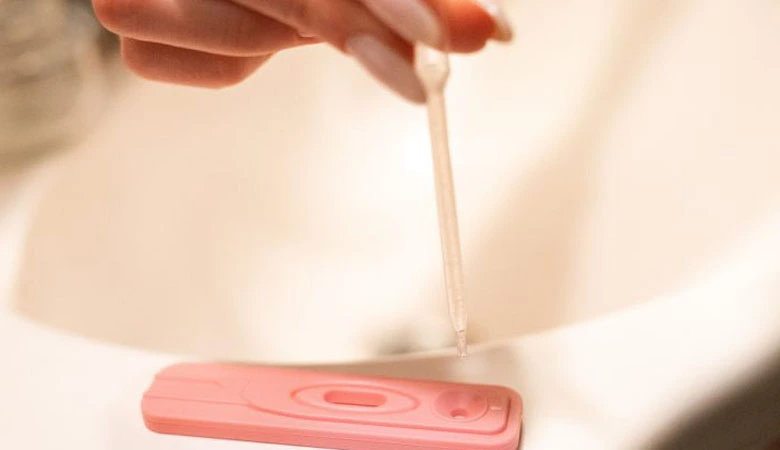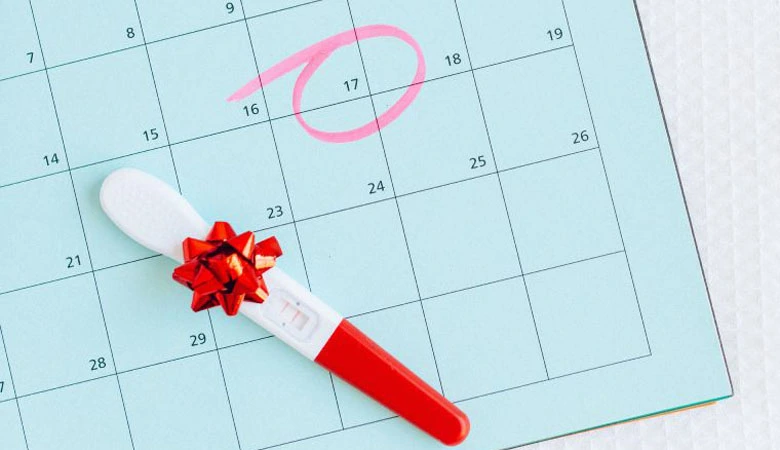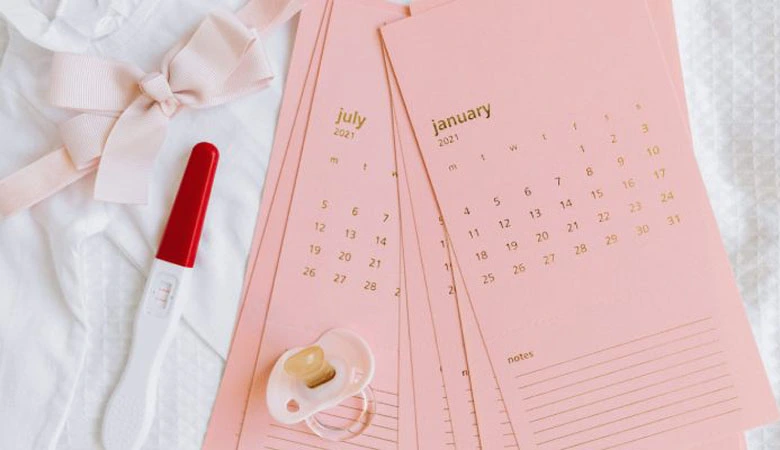Ovulation and Ovulation Calculators: What You Need to Know
- Ovulation Calculator
-
- UPDATED APRIL 08, 2024

by Tasha Mayberry
430 shares
As women, we’re all too familiar with the terms menstruation and menstrual cycle, and we’ve become very adept at calculating roughly when to expect our next period. But what about ovulation and ovulation calculators? What do these words mean? Do I need to know about them?
The short answer is – If you want to get pregnant or want to avoid getting pregnant, then yes, you should be well-informed about your ovulation cycles and why you may need the help of ovulation calculators.
What is ovulation?

Ovulation is the process by which your mature egg is released from your ovaries and into your fallopian tubes.
What does this have to do with your hopes (or avoidance) of becoming pregnant? After an egg is released, it has typically a 12 to 24-hour window to become fertilised. Sperm can live inside your reproductive tract up to five days after intercourse. Put two and two together, and your ovulation period is when you are likely to get pregnant. The Mayo Clinic notes that having regular sex within five days of your ovulation day increases your odds of conceiving.
Do I feel anything when I am ovulating?
No symptom or sign indicates your particular day of ovulation. There are, however, symptoms which could indicate impending ovulation, such as:
Vaginal discharge changes.
You may notice an increase in the wetness of your discharges before ovulation. You may also see that these mucous discharges tend to be more transparent and more slippery than usual. This discharge is often described as similar to the appearance and feel of raw egg whites.
Body temperature.
Your body temperature tends to have a slight increase immediately after ovulation, which you can easily check using a thermometer. It may be hard to tell whether you’ve had a rise or not, especially if you haven’t been religiously monitoring your temperatures even before ovulation.
If you are trying to conceive and wish to keep track of your basal body temperatures, you can use traditional thermometers and record your readings on your diary daily. But there are also specialised thermometers designed to keep track of your ovulation. The most popular brands currently out in the market are the Easy@Home Smart Basal Thermometer and the Femometer Intelligent Basal Body Thermometer. The best thing about these ovulation thermometers is that they often come with integrated apps, which you can easily download on your mobile device. The data is sent to the app, recorded, and mapped out on a chart – it’s as easy as that. You don’t need to worry about continually writing your measurements; you just have to remember to take them!

Tenderness and pain.
Some women may experience breast tenderness and mild abdominal pains or bloating during their ovulation period. However, the NHS emphasises that although these are commonly reported symptoms, they are not reliable predictors of ovulation.
Ovulation Calculators
Ovulation calculators are online tools designed to help you approximate when your “fertile window” is. Your fertile window is when you’re chances of getting pregnant are at their peak.
A lot of ovulation calculators are straightforward to use. Most of them require you to enter the day of your last period as well as the usual length of your cycles. Once you’ve entered those details, the system immediately tells you when you’re ovulation cycle is most likely to occur.
A simple Google search would reveal there are a lot of ovulation calculators online. Here are some of our favourites:
- NHS111 Ovulation Calculator. The NHS calculator calculates your fertile dates and displays your approximate fertile dates for the next eight months along with corresponding expected
due dates should you fall pregnant within these fertile days. - BabyCentre Ovulation Calculator. The BabyCentre calculator shows the same results as the NHS111 above. However, it will only display fertile days for the next six months, as opposed
to eight. - Mother and Baby Ovulation Calculator. The Mother and Baby ovulation calculator displays a visual calendar instead of just date ranges. The calendar is colour-coded, to tell you when you are ovulating when you are fertile, and when your menstrual period will run. The results are only for one month, but if you sign up to their e-mail database, you will be able to download a six-month PDF calendar.
Although ovulation calculators give you a good gauge of when you are likely to conceive, they may not necessarily reflect accurate data relevant to you. Remember, these tools were created based on the average population, and you and your period may have unique characteristics which may skew these results. Ovulation calculators also don’t work when you have incredibly irregular cycles.

Ovulation Test Kits
Ovulation test kits, otherwise known as fertility kits, are products that are becoming increasingly popular due to their claims of 99% accuracy in predicting ovulation cycles.
A lof the ovulation kits contain hormone test strips which you have to use regularly. Your hormone levels dramatically increase during your ovulation, detected by taking samples of your pee.
There are a lot of ovulation test strips available for you to purchase over the counter. They’re incredibly easy to use – you either pee into the test stick itself or pee into a cup and dip the tests strips there. The time to obtain the results may vary according to the product, but this usually takes no longer than 30 minutes.
There are also some "all-in-one" kits which include test strips, basal body thermometers, and ovulation tracking apps and devices. One thing to note with these kits is that the more complex the products are, the more expensive they can get.

Tracking your ovulation can be tricky – whether you’re doing it to conceive or as a natural means of contraception. If you’ve been trying to fall pregnant and the above measures aren’t helpful, or you want to discuss your contraception options, or you may feel like something is wrong with your cycles, or you simply want more information – the best thing to do is always to approach your GP first to discuss your concerns with them.